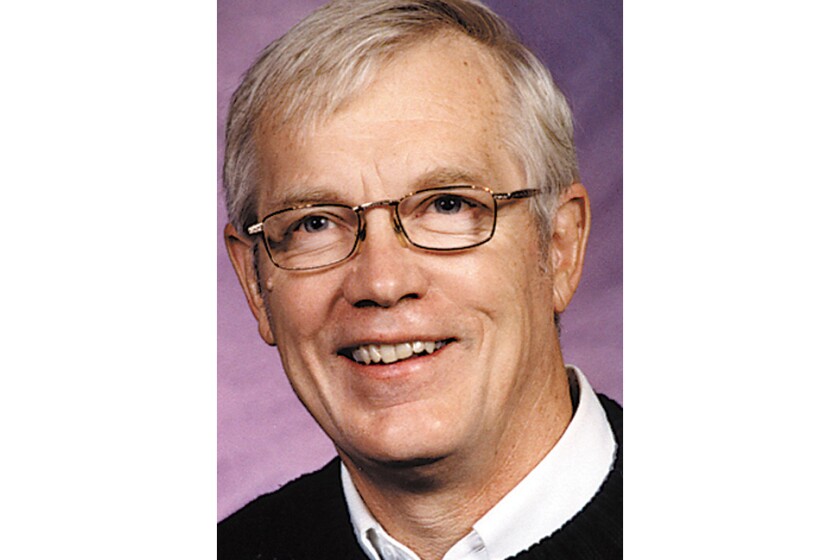In 1964, as a college junior, I found myself teaching physical education in Madison Lake, Minnesota.
I have been teaching at one level or another ever since. That was 60 years ago.
ADVERTISEMENT
Today, I teach teachers in Guatemala and Ethiopia as part of a Peace Corps Project called Virtual Service Pilot. I also continue my involvement in Project Graduate, where, as you know, our goal is a 100% graduation rate.
So, what have I learned in all of those years of working with students and teachers in Minnesota, New Jersey, Wisconsin, Iowa, Uruguay, Iran, Guatemala, Columbia, Puerto Rico, Ethiopia, the Republic of Georgia, Ukraine, and yes, even in the former Soviet Union?
First, teaching is a laudable profession. Teachers help students find meaning in life, open doors for people, and bring a breath of fresh air to them. They also help students achieve the impossible dream.
I learned that kids are kids — they are the same the world over. Whether they are kids from Iran, New Jersey, or Red Lake, kids are kids. They like music, they like to visit, they enjoy fun things, and they like to joke around, laugh, play, dance, and sing.
They also like to learn, especially when the teacher makes things exciting and fun. Good teachers make learning interesting and enjoyable.
I also learned that kids are different. They have different needs and interests. Last week, I asked some middle school students in a small village in Guatemala what kind of music they liked the most.
Many said "rock," but others enjoyed a wide variety of music, including traditional Guatemalan music. You can’t teach the same thing to 30 students all the time, day after day, because everyone is not on the same page day after day.
ADVERTISEMENT
All kids want to find success in school and enjoy it. After all, at least one-third of their first 18 years is spent in school. Attending school and not looking forward to it is painful. Yet, at least one-third of our students or more find going to school to be something they would rather not do.
Initially, when kids are five, six, seven or eight years old, they can’t wait to get to school. Things change for kids due to many factors. However, we need to give more attention to the third of the students who would rather not be in school.
Building trust in the classroom is only possible when you get to know your students. Trust is built on familiarity, sharing, and taking a sincere interest in kids. When asked why they like this teacher or that teacher, students invariably say, "Because he/she is nice."
It’s nice to get to know your students. Sometimes, teachers have to throw away the textbook and visit.
I learned that it’s impossible to believe that one school using traditional organizational methods and procedures is good for all students. They’re not.
This is why we have alternative and charter schools, and even those are too often like traditional schools rather than unlike them. ��������s need to change to fit the kids' needs, not vice versa.
One of the best things that has happened in recent years in education is the awareness of and teaching of diversity. The United States is a much more welcoming place where every color is appreciated.
ADVERTISEMENT
Not only that, but we have become a more prosperous country because we use everyone's talents and gifts. The word "exclusion" is no longer part of our vocabulary.
I learned that teachers must be positive, just as coaches show positivity toward their athletes. We must believe that every child is capable of learning and graduating from high school.
When students develop confidence in themselves, they can overcome the most challenging of barriers. Teachers help instill that positivity, and they have to be relentless in doing so. Every team is a class, and every class is a team.
I always like to start or finish my classes with some corny humor.
A cat, a dog, and a guy walk into a cafe. The waitress asks, "What can I get you?" The dog says, "I’ll have a cheeseburger. The guy will have a steak. And the cat will have a tuna fish sandwich."
The waitress says, "Wow, a dog that can talk. That’s amazing!" The dog says, "No kid yourself. The cat is a ventriloquist."
Even though your students may not laugh, they will appreciate your attempts at putting humor in the classroom.
ADVERTISEMENT
The final thing is to have fun and practice the second greatest commandment, "Do unto others as you would have them do unto you."
Thanks to all of our teachers, and have a fun and enjoyable year.
Humor: A termite walks into a bar and approaches the bartender. He asks him, “Is your bartender?” When teachers laugh, teachers last. When kids laugh, kids last.
100%
Thanks to all of you for supporting our 100% graduation rate goal. Remember to tell your kids as they go off to school, “Don’t forget to graduate.”
John R. Eggers of Bemidji is a former university professor and area principal. He also is a writer and public speaker.








